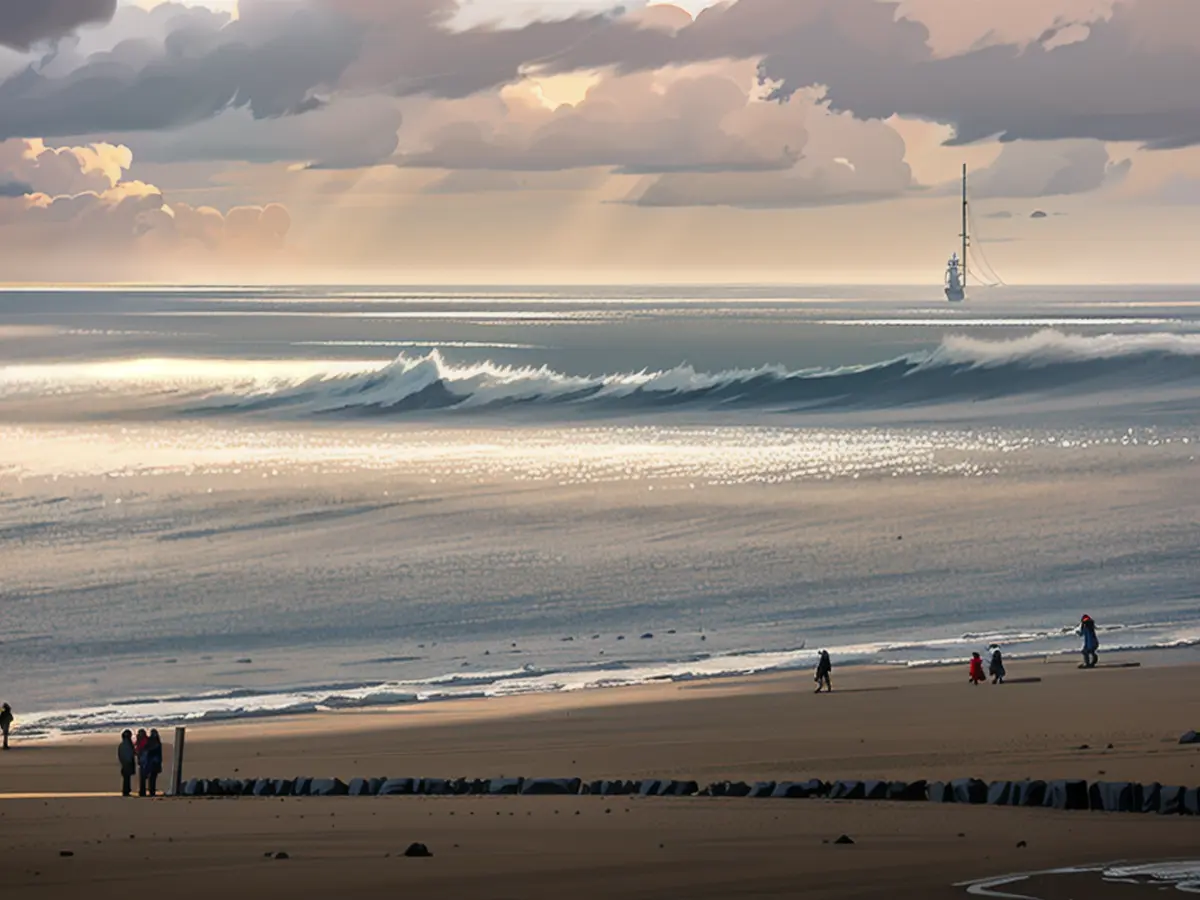Deep-ocean carbon storage feasible, study finds.
The concept of CCS (Carbon Capture and Storage) promises to keep harmful greenhouse gases from entering the atmosphere and instead store them deep underground. Two environmental organizations, German Environmental Aid and Greenpeace, are against it, but the coalition government is taking the right step by approving this process.
The decision made by the federal government today resembles a doomsday machine: It plans to allow pumping large quantities of CO2 beneath the seabed, such as under the North Sea. Environmental groups are alarmed, warning that the North Sea shouldn't be turned into a climate dumpsite. Isn't this just sweeping the issue under the rug? The short answer: not at all. Allowing CCS and CCU is the right thing to do.
CSS (Carbon Capture and Storage) refers to the capture of CO2 and its storage, while CCU (Carbon Capture and Utilization) involves using CO2 in the industry. The latter seems promising, but it has its limitations. The storage capacity is not infinite, and storing itself consumes a significant amount of energy as well.
The IPCC (Intergovernmental Panel on Climate Change) has concluded that without CCS and CCU, climate goals cannot be met. This should be enough reason to lift the current ban on these two technologies in Germany. The concerns of Greenpeace and DUH don't hold up under closer examination. They doubt that the gas will remain underground, but that's not accurate.
According to the Helmholtz Institute Geomar in Kiel, the risk of CO2 leaks from underground storage is very low. Only ten tons of CO2 would escape among one million tons stored, they say. Christoph Hilgers and Frank Schilling from the Karlsruhe Institute of Technology argue that storage in the geological substratum is possible and safe. A series of commercial projects in Norway has proven this.
No High Expectations
The evidence provided by the experts convinces not only the FDP and Robert Habeck, but also the environmental associations NABU and WWF. CCS and CCU should be a component of climate protection, according to a joint position paper. In particular, in industries where coal or gas cannot be produced without these technologies, like cement production or steel-making. Ottmar Edenhofer of the Potsdam Institute for Climate Impact Research believes carbon dioxide extraction from the air is essential for reaching climate targets.
However, the Kiel Geomar Institute highlights the limitations of these technologies: At least ten years would be required to test a potential site for its suitability as a CO2 storage site. An additional five years would be needed to assess a particular plant and obtain the necessary permits. So, even if you start now, CO2 would not be stored in the German North Sea before 2039 at the earliest. Even if the process accelerates - CCS and CCU are long-term projects with limited effectiveness.
Read also:
- Year of climate records: extreme is the new normal
- Precautionary arrests show Islamist terror threat
- UN vote urges Israel to ceasefire
- SPD rules out budget resolution before the end of the year
In light of the low risk of CO2 leaks from underground storage, as reported by experts from the Helmholtz Institute Geomar and the Karlsruhe Institute of Technology, the traffic light coalition should reconsider its stance against deep-ocean CO2 emission storage solutions. This could potentially contribute to reducing CO2 emissions from heavy industries like cement production and steel-making.
The slow progress of Carbon Capture and Storage (CCS) and Carbon Capture and Utilization (CCU) projects, with a minimum of 15 years required for testing and permit acquisition, emphasizes the need for Traffic Light Coalition governments to consider other carbon emission reduction strategies as well. This includes promoting renewable energy sources and encouraging energy-efficient practices in industries.
Source:








